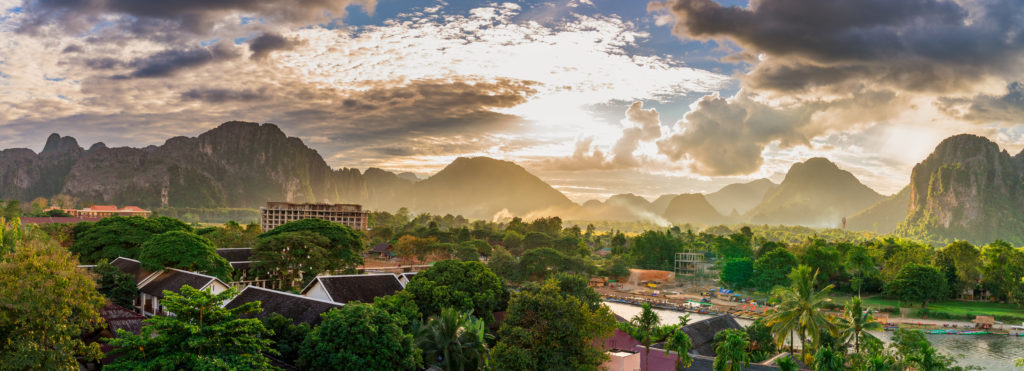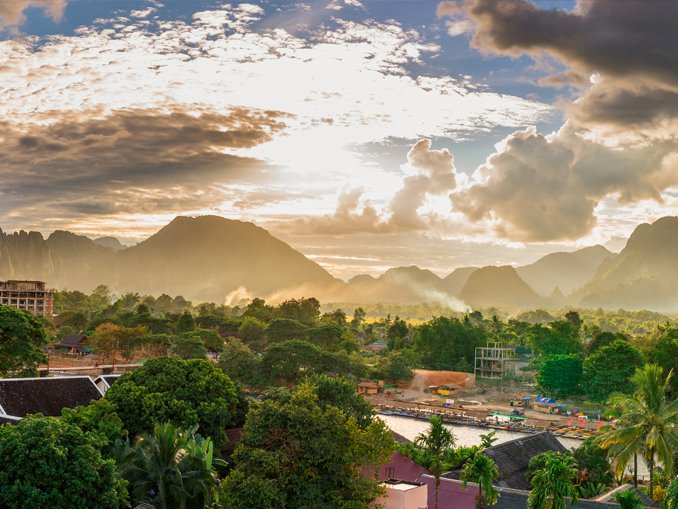By Sophie Cox and Nadia Zulkifli, Firestar Research, Kuala Lumpur, Malaysia letschat@firestarresearch.com
So, you just picked up a new client. Or, maybe an existing client has a new insights manager. Or, perhaps your client or business is expanding their global footprint. They’ve asked you to conduct a project in Thailand or Indonesia… Yikes, you’ve never done a project there! What now?
For the inquisitive researcher, these markets provide rich and exciting opportunities to dive into often complex and unfamiliar cultures. As researchers who have a combined twenty-five years of experience conducting research in Southeast Asia (SEA), we are happy to share some pointers so that you can speak confidently with your clients or colleagues about how to approach qualitative research in this part of the world. To make sure we are sharing multiple perspectives on this market, we conducted interviews with some senior insights professionals based in Southeast Asia.
A Quick Reminder about Geography
The Southeast Asian region is home to more than 670 million people, in an area to the east of India, to the south of China, and to the west of Australia. Indonesia, Vietnam, the Philippines, and Thailand are the markets most frequently researched by global clients due to the size of their populations and growth rates of their economies. Malaysia, Singapore, Cambodia, Laos, Brunei, and Myanmar (Burma) complete the set, and all these markets have active qualitative practitioners.

General Cultural Pointers for Qualitative Research in Southeast Asia
Diversity and uniqueness of markets
It can be challenging to manage and interpret projects in countries such as these, due to the incredible variety of cultures, languages, and religions across the region. Nichola Rastrick, Netflix’s director of consumer insights for APAC (Asia Pacific Countries), shared with us, “Southeast Asia is a geographical descriptor, not a homogeneous region, and due to the diversity, you have to take great care when you decide to take findings from one market and extrapolate them to others. Cultural differences can impact all sorts of consumer choices, from their insurance provider, snack brand, and what they choose to watch.”
Religious and language differences are important
Religion is one cultural influence; for example, Indonesia is the world’s most populous Muslim nation and therefore, operates very differently on a cultural level from Thailand, which is majority Buddhist, or the Philippines, which is majority Catholic. Attitudes and reception toward Western brands and products also differ depending on a country’s colonial history. Then there are Chinese, Arab, and Hindu influences to contend with, and we haven’t enough space here to discuss all the different languages.
A “yes” society, which aims to please
We also asked Ian Kwan, former regional insights director at GSK, about advice he used to give to his international colleagues when they came into the region. According to Kwan, Southeast Asians tend to “like” things that are shown to them out of politeness. As researchers, it’s important to be creative and choose projective techniques that will elicit more realistic responses, and to build discussion guides that tackle things more obliquely. For example, asking respondents, “How do you feel about brand X?” might elicit polite and hygienic responses such as, “I think brand X is well-known, and people like it.” However, a personification exercise might reveal brand X as well-known but inauthentic. An experienced local moderator will be able to help you tease out what respondents are really saying and thinking and draw your attention to the cultural norms which you may not spot.
Partners and client teams on the ground will also follow similar cultural codes. People may indicate that clients’ suggestions are possible (when they might be incredibly difficult to pull off) so that neither you, nor they, lose face. People may also feel uncomfortable admitting when something is not working, out of reluctance of making the team look bad or “losing face.” Gently double-check on details or progress and make sure you give enough space for partners or clients to express any concerns that they may have in a nonconfrontational way. Friendly phrases such as, “I hope recruitment is going well, but if you’re facing any problems, let’s talk about it and find a solution together,” work much better compared to, “We appear to be behind schedule on recruitment, so can you give me some updates?”
Remember your place! SEA takes hierarchy and relationships seriously
Southeast Asia pays great respect to hierarchy in all environments. In daily conversations, many would automatically defer to opinions from elders. Within most work environments, final decisions are made strictly by those in senior positions. Within society, there is a strong reverence for titles and royalty in all markets. This is especially important to consider when designing projects. For example, for IDIs, a moderator of equivalent status should be used—e.g., if you are interviewing a CFO, you should consider a moderator who is also a high-status individual to “show face” and acknowledge the seniority of the respondent. In groups, recruiting respondents from a similar background in society makes for a richer and smoother discussion. While it is not essential, a moderator of similar age and gender will lessen the dissonance for respondents. Once roles within the group have been firmly established during the storming phase, the natural friendliness of Southeast Asian cultures easily develops into warm and open discussions.
Research-Specific Pointers for Southeast Asia
Find a reliable partner
Make sure the partner you pick truly knows and has experience in the specific cultures of the region and demographics that you want to research.
In addition, look for partners who offer help and suggestions when it comes to methodologies and planning. Southeast Asia is a region that is diverse and changes very quickly, so having a person on the ground that you trust is key to navigating the markets.
Be as specific as you can when requesting costs
You’ll find many agencies will ask a lot of questions before sharing costs. Seemingly small details such as income levels can have a huge impact on recruitment and incentives, making ballpark costs an uncommon and difficult practice. Share as full a brief as possible to ensure all are on the same page.
Trust moderators, not transcripts
Not only are translated transcripts very expensive and time-consuming to acquire, but they also often dilute the richness of the discussion and miss cultural nuances, such as body language, that may be critical to your findings. Moderators are usually more than happy to discuss findings with you and will be able to offer a second layer of analysis due to their familiarity with the local context.
Always look up public holidays—there are a lot of them
At the planning stage, be mindful of potential blackout dates. Most Southeast Asian countries have multiple public holidays throughout the year (there are eighteen in Malaysia!) and major cultural holidays include Eid al Fitr (at the end of Ramadan) and Lunar New Year, where you might find entire markets shut down for a week. This can easily stymie the planning of a multicountry project.
Take local culture and conditions into account for your sample
Some key demographic, social, and cultural differences should be taken into account when designing samples in Southeast Asian markets. Living alone is much less common, and empty-nesters are also unusual, whereas three-generation households and adult children still living at home are relatively more common. We seldom conduct research with people over the age of 60 unless they are a specific target for the brand, because if they live with adult children, they are often not the key decision-maker. However, when it comes to age, the most critical thing to remember is the cultural practice of deferring to one’s elders. As Kwan pointed out, “A 25-year-old in the same group as a couple of 45-year-olds will most likely either agree with everything they say, regardless of whether it reflects their actual opinion, or simply say nothing at all.”
You should also consider separating male and female respondents unless the sample really doesn’t allow it. This would be nonnegotiable in some of the more conservative markets (e.g., Indonesia or Brunei) and for some categories such as finance and automotive.
Utilize same methodologies, different executions
It generally is not an issue to transfer your preferred methodology to Southeast Asia, but you may need to adapt it slightly to local conditions. Standard in-person focus groups are two hours with seven to eight respondents. It is important to note that the cultural environment requires you spend more time on warm-ups than you would in the United States or Europe. Respondents should not be rushed, as they need time to understand the dynamic and feel confident that they will not “say the wrong thing.”
Written responses in groups, especially private responses, seldom generate useful insights as they can be overly time-consuming, disrupt the flow of the group, and make respondents feel self-conscious about their answers and consequently contribute less. Instead, consider why you want to use this, and then try to address these reasons with other techniques. For example, if there is a concern that everyone may follow the first response given to a stimulus, try using gamification approaches such as emojis or scorecards that can help uncover individual reactions without some of the negative impacts of written activities.
In-homes and ethnographic methodologies can be particularly valuable for researchers and client teams who have less experience in the region. Conducting research in respondents’ homes and lives can provide valuable context for their brand interactions. The pandemic has generated a lot of success stories about migrating these methodologies online. We have noticed that what works well about in-homes moved online is a combination of Zoom calls, pretasks (e.g., prerecording of home or product interaction), and integration of other family members as respondents, videographers, or interviewers. If you do get to go in person, remember that it may be hot, there may be no air conditioning, and you will be asked to remove your shoes before entering a home. Because there is not the same culture of entertaining in home in some parts of the region, we recommend limiting numbers to one or two clients per session.
Online qual has grown rapidly due to COVID-19 restrictions and is possible in most Southeast Asian markets. However, it’s worth remembering that there are still limitations to conducting high-quality qualitative research online. Sample reach can be compromised, and in many rural markets, online is not viable due to poor infrastructure and lower income levels. It can be challenging to elicit genuine responses that provide enough depth. It’s also important to factor in additional time for responses. In our experience, a task that might take five minutes in Western markets could take a respondent fifteen minutes here. Workarounds include recruiting “teams,” e.g., husband and wife or two siblings to interview and record each other to make it feel more “real,” or using unplanned video calls to ensure we do not see Insta-kitchens and homes which have been tidied for the research and do not reflect the messiness of everyday life.
Ensure your stimulus material won’t fall flat
It’s worth giving careful thought to stimulus materials, to ensure they are suitable for the culture you are working with. Nichola Rastrick told us, “It’s super important to make sure that materials are culturally appropriate and that they are relevant to the local respondents. If people can’t see themselves represented in any visual stimulus that you are showing, they will naturally find them harder to relate to and be less receptive to the messaging they contain.” In the Muslim markets, this means showing women who are dressed modestly, and some who are wearing a headscarf or hijab, as well as those who aren’t. Of course, ensure Asian faces are present. Speak to your local partner about whether or not everything is good to go, as it’s easy to overlook things that could unintentionally offend, e.g., prototypes of toy pigs in Muslim markets such as Indonesia, Malaysia, or Brunei, or visuals of the soles of feet in Thailand.
Conclusion
Globalization has led to a broadening of scope for many researchers, and the Southeast Asian countries look like an attractive source of growth to brands, with their large populations and developing economies.
Qualitative research works just as well in these markets as any others, and with a little preplanning and some adjustments, you will get to experience the wonderful cultures that the region offers. When in-person attendance is possible, be sure to book a cultural safari too, so that you can get to truly appreciate some of the warmth and hospitality of the people here.





Be the first to comment